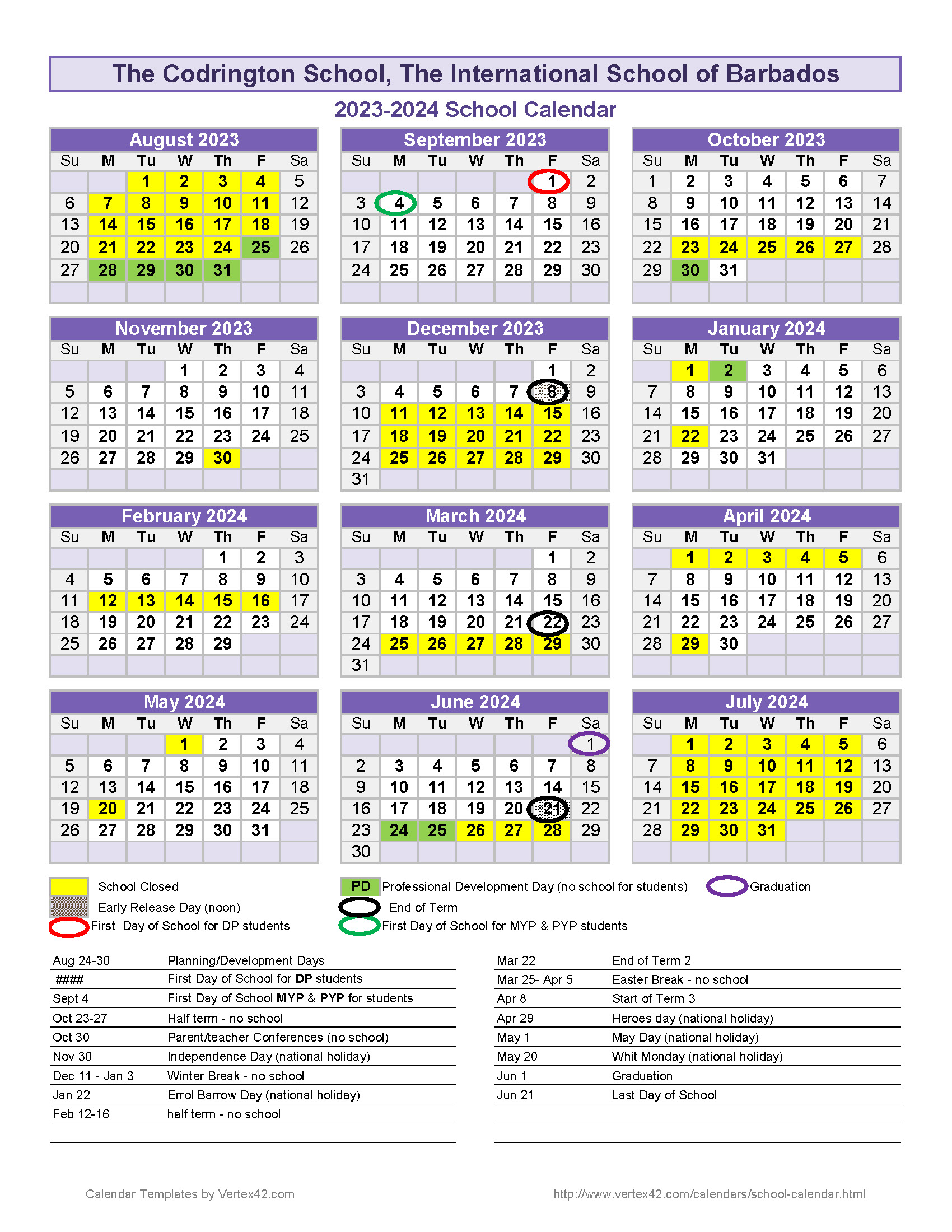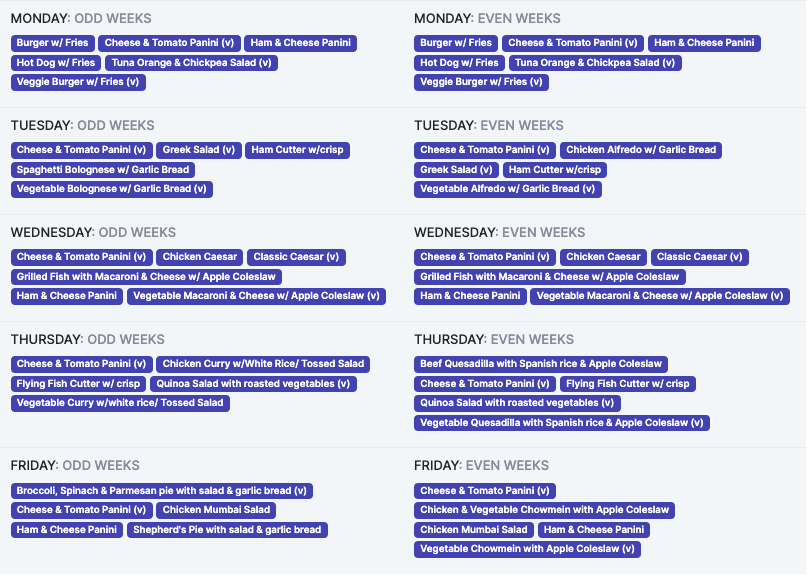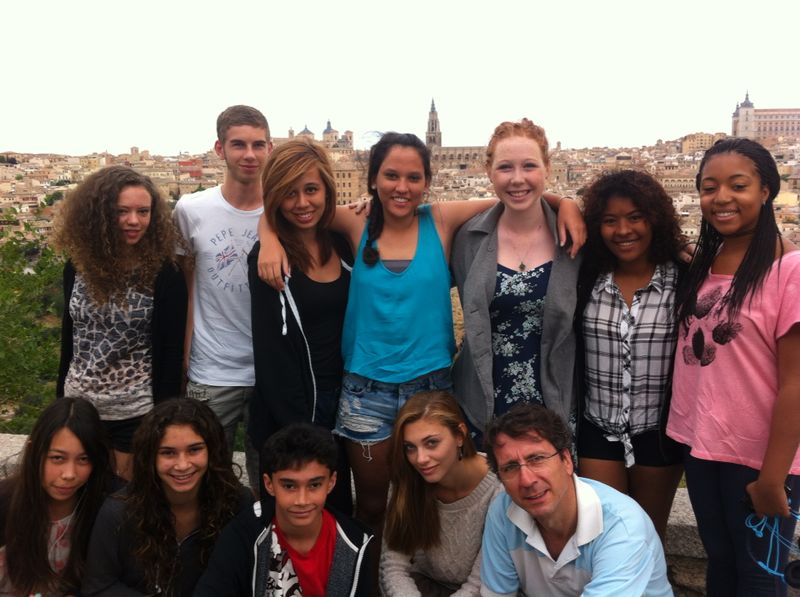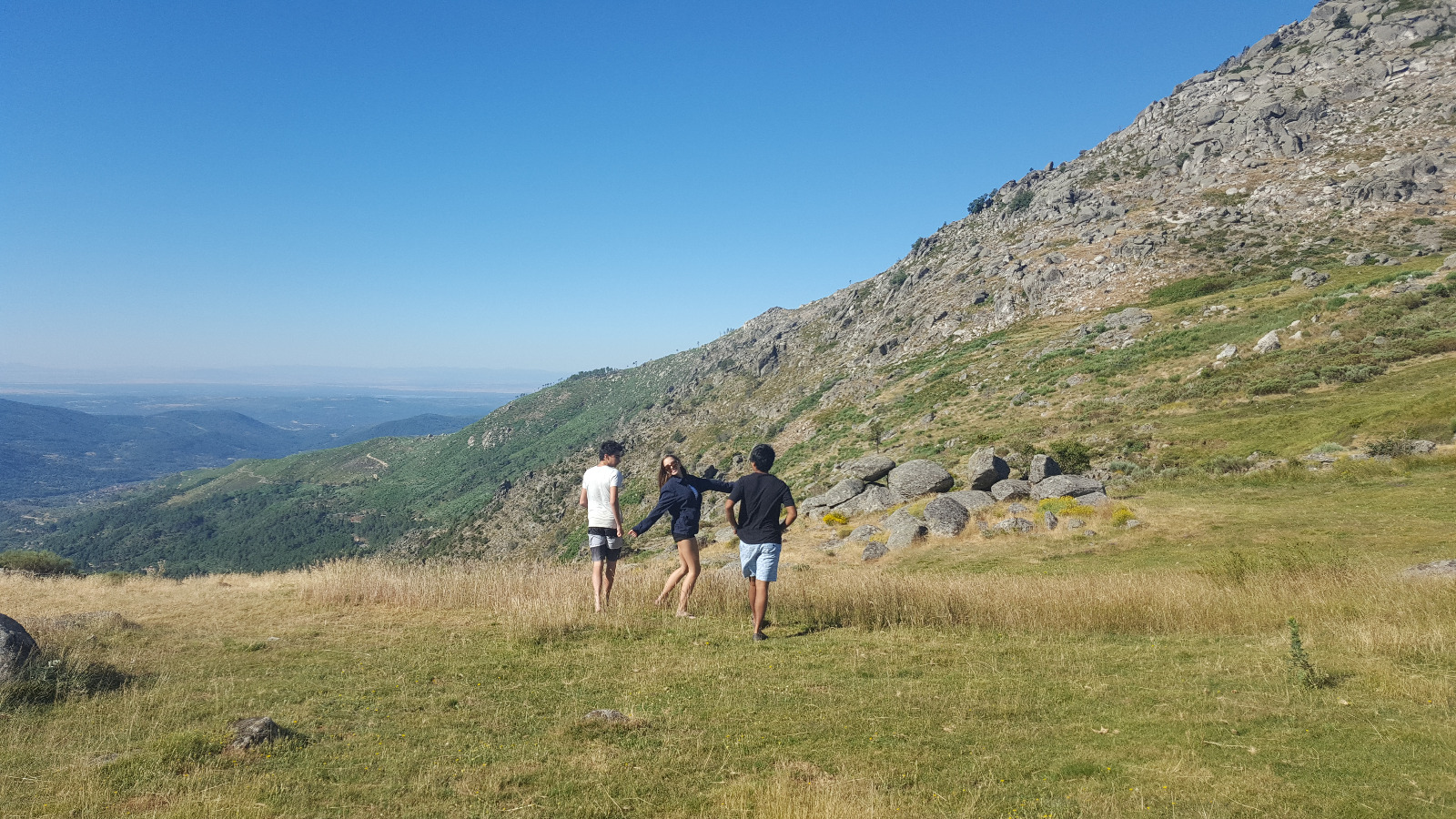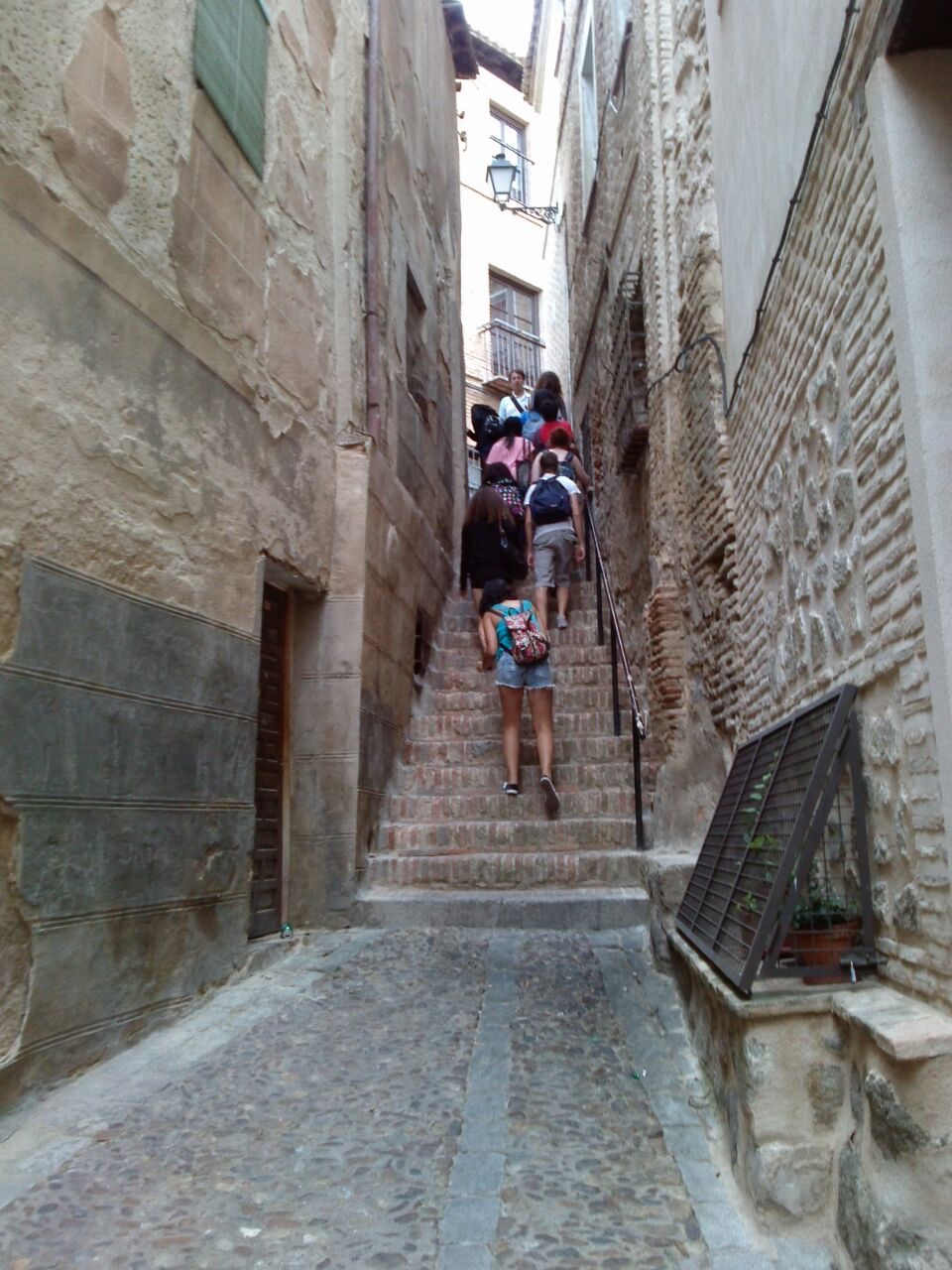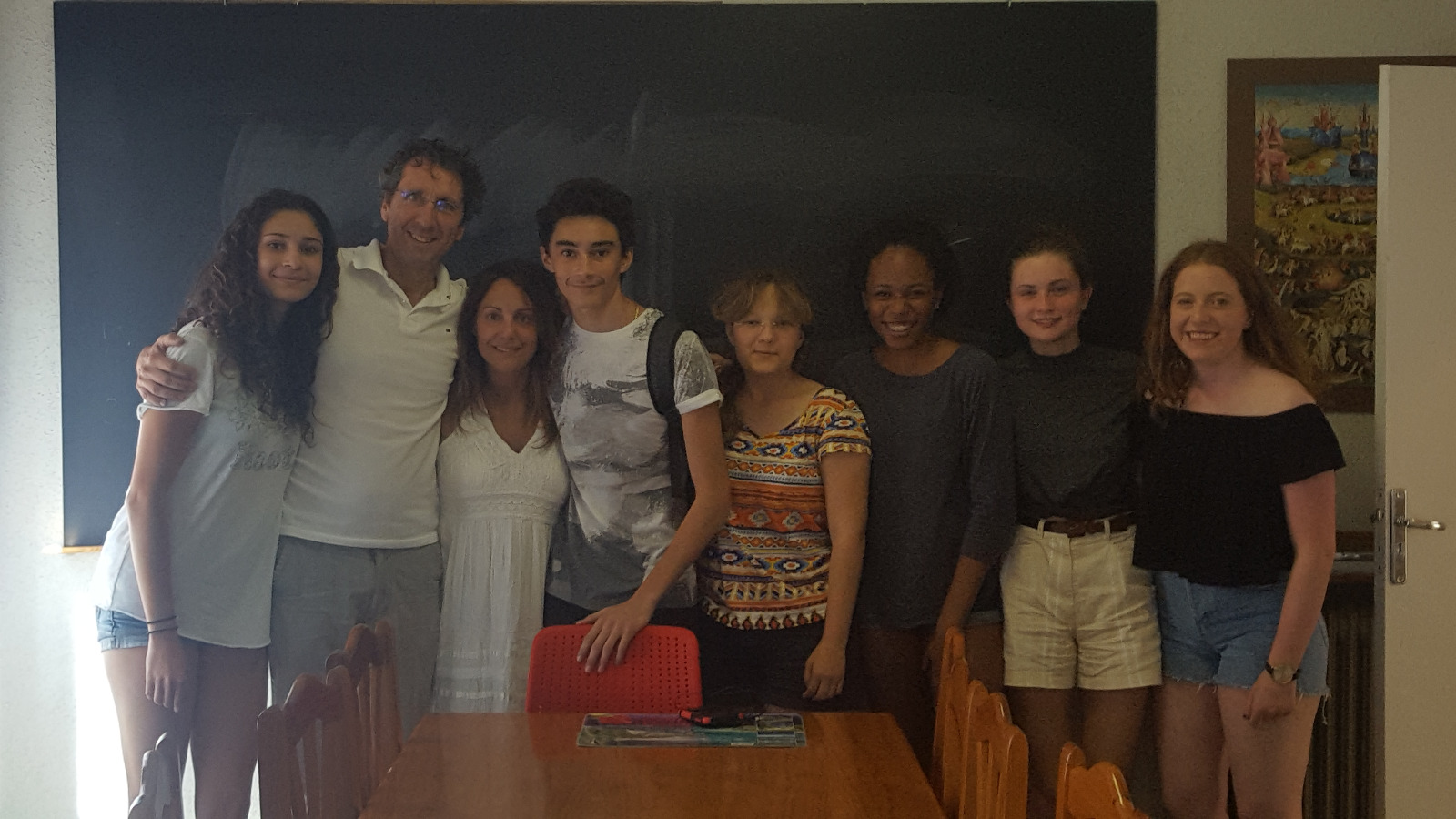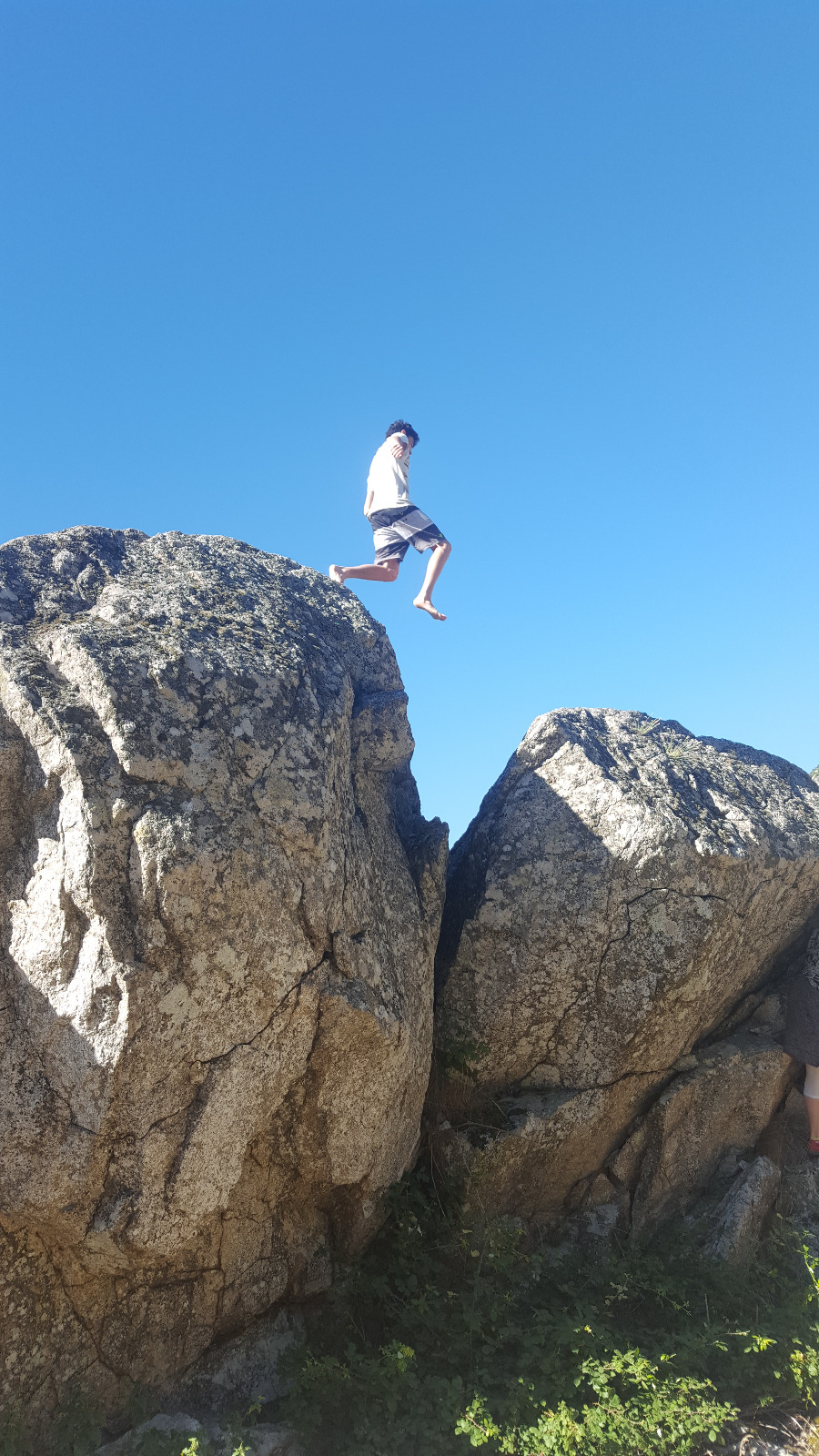Campus
Located in the parish of St. John on the stunning east coast of Barbados, TCS has architecturally transformed over the last decade, repurposing many of the original parts of our historic buildings into bespoke learning spaces.
The Secondary School and Primary School, while on opposite sides of our 3-acre wooded campus, share large landscaped grounds with shaded and wooded recreation areas. There is a basketball court and a playing field as well as a separate playground for PYP 2-4 students.
Our entire campus, with 22 classrooms, one design workshop, one multipurpose room, a community hall, a library, two science labs and features wireless Internet access.
Health & Safety
Coronavirus disease 2019 (COVID-19)
The Codrington Schools top priority is the health, safety and well-being of all students and staff.
The school has been monitoring the recent developments of the outbreak of COVID-19,commonly referred to as the coronavirus. According to the CDC, “Coronavirus disease 2019 (COVID-19) is a respiratory illness that can spread from person to person. The virus that causes COVID-19 is a novel coronavirus that was first identified during an investigation into an outbreak in Wuhan, China.”
Symptoms of COVID-19 include fever and lower respiratory tract issues such as cough and shortness of breath. Currently, there is not an anti-viral medication or vaccination available for COVID-19. We will continue to follow any guidance received from The Barbados Government, in regard to COVID-19. If we were to experience a COVID-19 case, we will take our direction from The Barbados Government regarding potential school closings.
The school will continue to perform and enhance its routine cleaning of our school facilities to keep our students and staff as safe as possible. We will include a greater emphasis on frequently touched surfaces and areas, including classrooms, bathrooms and the cafeteria; informing students of what they should be doing, especially with regards to washing hands. It would be helpful if parents could seek to also have these conversations at home in order to emphasize the important of such protocols at this time.
Please join The Codrington School in encouraging students to practice good health habits, at home and at school. These actions include:
- Avoid close contact with people that are sick
- Avoid touching your eyes, nose and mouth with unwashed hands
- Stay home when you are sick, except to seek medical care
- Cover your coughs and sneezes with a tissue
- Clean frequently touched surfaces and objects daily
- Wash your hands often with soap and water for at least 20 seconds
- Use hand sanitizers with at least 60% alcohol
Coronavirus Resources:
School Clinic
In relation to the health of the individual child. Meeting national standards each year, all schools within Barbados must register with the Ministry of Education & Human Resources; part of the application process involves the school demonstrating that it meets certain health and safety standards. Each school must obtain a Health Certificate from the Ministry of Health, which undertakes an inspection as to whether the premises are satisfactory to function as an educational institution; The Codrington School has been awarded such certification for the current academic year. Each school must also obtain certification from the Barbados Fire Service, which undertakes an inspection as to whether the premises meet their set criteria regarding fire safety; The Codrington School has been awarded such certification for the current academic year. We also carry out regular fire and emergency drills with our staff and students to ensure that all are aware of and congruent with our procedures.
Closure due to severe weather conditions
In the event of a threatened environmental crisis – such as a hurricane, earthquake or severe flooding – the school’s principal will make a decision as to how to proceed. Thereafter, communication will be effected by e-mail protocol for such emergencies.
If school is closed by the principal, parents/guardians and all employees are advised that under no circumstances is anyone to attempt to reach the campus. If the school is closed on account of an environmental crisis, there will be no access to the campus for anyone. If for any reason parents/guardians are unsure of the situation, and cannot obtain reliable information, they should err on the side of caution and keep their children at home. In addition to the foregoing, an appropriate message will be placed on the school’s website.
If the closure should need to occur within the school day, then once again the school’s principal will make a decision as to how to proceed. Thereafter, communication will be effected by e-mail protocol for such emergencies.. We will do all that is practicable to ensure a safe return to home for our students.
Zika Virus
Zika is a mosquito-borne virus that is new to the Americas. Since Brazil reported the first cases of local transmission of the virus in May 2015, it has spread to 26 countries and territories* of the Americas (as of 30 January 2016).
There are two main reasons for the virus’s rapid spread: (1) the population of the Americas had not previously been exposed to Zika and therefore lacks immunity, and (2) Aedes mosquitoes—the main vector for Zika transmission—are present in all the region’s countries except Canada and continental Chile.
The most effective forms of prevention are (1) reducing mosquito populations by eliminating their potential breeding sites, especially containers and other items (such as discarded tires) that can collect water in and around households; and (2) using personal protection measures to prevent mosquito bites.
Head Lice
What are head lice?
Head lice (Pediculus Humanus Capitis) are tiny insects that live in hair. Nits are the empty egg cases attached to hair that head lice hatch from. Head lice are a common problem, particularly in schools. They’re largely harmless, but can live in the hair for a long time if not treated and can be irritating and frustrating to deal with.
What are the symptoms?
The most common symptom is constant itching of the scalp. This may be accompanied by scratch marks or small red lesions resembling a rash on the head. There may also be a tickling feeling of something moving in the hair. Head lice are most active in the dark and can cause difficulty sleeping and irritability.
How are head lice spread?
Head lice move by crawling; they cannot hop or fly. Head lice are usually spread by direct hair-to-hair contact or infrequently by sharing things like hats, scarves, combs, hairbrushes, helmets and headphones. Head lice that live on people can’t live on pets like cats or dogs.
How are head lice diagnosed?
Head lice have three forms: egg (or nit), nymph, and adult. Nits are laid at the base of the hair shaft closest to the scalp. Nits are firmly attached to the hair, are oval-shaped and very small (about the size of a knot in thread). Nits appear yellow or white or sometimes as the same color as the hair of the infested person. Nits are often confused with dandruff or remnants of hair spray; but debris is not usually firmly attached to the hair.
Nits hatch into nymphs in 8 to 9 days. Nymphs look like adult lice but are smaller. They mature into adults in 9 to 12 days. Adult lice are the size of a sesame seed, have six legs, and are tan to grayish-white in color. They live for up to 30 days on a person’s head, but die within one or two days after falling off.
Infestations are diagnosed by finding adults, nymphs or viable eggs. A magnifying lens, good lighting and a fine-toothed comb are useful. Head lice and nits are found on the scalp, particularly around and behind the ears and near the neckline at the back of the head. Viable nits contain an embryo that occupies most of the egg and often one or two eye spots are visible. Hatched nits are nearly transparent and are usually more than 1 cm from the scalp. If you suspect head lice ask a reliable source (your health care provider or someone familiar with head lice) to help confirm the problem.
Who is at risk of infestation?
Infestation with head lice is most common among preschool children attending child care, elementary schoolchildren, and the household members of infested children.
How can head lice be prevented?
Learn how to diagnose head lice and do regular inspections of children and family members. Check children when they return from overnight camps and school trips. During outbreaks, keep long hair tied back or braided to minimize hair-to-hair contact and discourage borrowing personal items like hats and hairbrushes.
How are head lice treated?
Head lice can be treated with an over-the-counter or prescription medication, usually as a shampoo. A health care provider can help select an appropriate medication. Treatment should be considered only for active infestations (adults, nymphs or viable nits are observed). Some steps to follow:
1. Check household members and other close contacts and treat those with an active infestation.
2. Treat all infested family members at the same time. Follow medication directions closely.
3. Retreat. A single treatment may not kill all the eggs. Retreatment usually should occur after seven to
ten days to kill any lice hatched from surviving eggs before they produce new eggs.
4. Repeated and thorough removal of lice and nits. Use a fine-toothed nit comb or fingers to remove all nits attached to hair shafts after treatment. Discard tissues or towel containing lice and nits. Clean combs and hair brushes by soaking in hot soapy water for twenty minutes or undiluted medicated shampoo ofr ten minutes. Continue to check for 2-3 weeks to be sure all lice and nits are gone.
In addition to medicated shampoos, other measures can be used but these are not required to treat a head lice infestation. Hats, scarves, pillow cases, bedding, clothing, and towels used by the infested person can be machine washed and dried using hot water and hot air cycles. Items may be dry-cleaned or sealed in a plastic bag for two weeks. Vacuum the floor and furniture, particularly where the infested person sat or lay.
What is the Public Health response?
If you have head lice it is important to tell family members, day care operators or schools principals so family members and other children can be checked and treated if necessary.
Tutoring
Secondary School
The Codrington School puts a great emphasis on academic success. As part of our goal to increase the focus and support on academics within the secondary school, the school offers after school tutoring in many of the subject areas. The goal of these sessions are to provide “subject focused” assistance with a subject specialist for those students who may want reinforcement of their learning Or for those students who may want extra challenge or to extend upon what they are doing within the curriculum.
These sessions are optional; though do require the students signing up beforehand.

The LINK comprises a skilled and vibrant group of individuals dedicated to providing minimal to moderate accommodations to exceptional students at the Codrington School. The purpose of the LINK is to collaboratively develop and facilitate individualized education plans for students. Those who receive support include students with formal Educational Psychology Assessment reports and those who fall under the EAL (English as an Additional Language) designation. In summary, we analyze academic and cognitive data, monitor progress, revisit goals and facilitate creative, multi-sensory instruction in and out of the regular class. The LINK employs explicit strategies that would allow students at all levels to thrive in their areas (s) of strength and improve in their area (s) of difficulty.
SEN: In order to avail of withdrawn, Special Education support, parents are asked to present a current (not more than 2-year-old) Educational Psychology Report which is used to create an IEP (Individualized Education Plan) for the child. All specially designed instruction is built around targets stipulated by the IEP.
EAL:Students who arrive at Codrington with English as an Additional Language (and who require support) will be selected to be part of the EAL support program. These students range from those having little spoken or written English to those needing the vocabulary-extension support needed to meet grade-level reading and writing expectations. Support for EAL students may require intensive pull out sessions (1-to-1) or minimal support from the regular class teacher in the classroom.
Library
The Codrington School Library first opened its doors in September 2009, as a result of a joint venture between the PTA and the school. In June 2012 the library was re-named the Dennison J. Mackinnon library.
The PTA fundraised for the initial book order required to start stocking the shelves, and Codrington families donated new and old books to add to this. Indeed books are still donated to the library regularly and are always gratefully received. We now hold over 8000 titles on our shelves. These range across fiction and nonfiction titles, a language section, DVDs, Audio CDs and learning centre resources.
All the titles are electronically catalogued allowing for easy tracing of subject material and tracking of books on loan to students.
Parent volunteers allow the library to be open on each school day, with classes gaining regular access to this wonderful world of books and learning.

Clinic
The schools clinic is staffed by the School Nurse, who is always on hand to help with all matters needing medical attention. Whether your child is a diabetic, asthmatic, has serious food allergies or just needs a plaster or a comforting place to be for their tummy ache, they will be in good hands. If your child needs any specific medical attention regarding any pre-existing conditions, we are happy to work with you on making sure this can be achieved at the school.
All medical information is submitted with applications to the school.
Please make sure that the school is kept up to date with all necessary medical information. This can be done by completing the form.

School Cafe
Students have the option of purchasing hot lunch from our café or bringing their own packed lunch.
To place your meal plan order please click the link below.
Bus Transportation
The Codrington School facilitates transportation, at a cost, either by its own vehicle or by companies that the school recommends to parents. All recommended vehicles have to meet all regulations relating to the safe transportation of children.
The pick-up points for this year are
- the Sunset Medical Centre, St James and
- the Aquatic Centre, St Michael.
If you wish to avail yourself of the transportation facilities, please complete the bus transportation form and return it to the office administrator. Arrangements will be made for your child to be collected for school and dropped at the designated venue at the end of the school day. There is, of course, a fee for this service and the level of this fee will be communicated to you when you sign the contract for transportation.
Door to door service
The school does not offer a door to door transport service. It is the responsibility of parents/guardians to ensure that their children are at the designated collection area on time in the morning and that they are there to collect their children again when they come home. Drop off times are 7:00 am – 7:10 am at the Holetown location and 7:00 am – 7:20 am at the Aquatic Centre location. Buses leave school just after 3:00 pm and 4.00pm Mondays through Thursdays and just after 3.00pm on Fridays. The 3pm bus will arrive at Aquatic Center at 3.30 pm and at Holetown at 3.45pm. The 4 pm bus will arrive at Aquatic center at 4.30 pm and Holetown at 4.45pm
Please click the following link to sing up for Transportation

Primary School Uniform
Early Years (PYP1 and PYP2)
All PYP 1 and 2 students wear house t-shirts and navy blue shorts to school.
Early Years (PYP3 to PYP4)
Boys
Navy blue shorts plus checked button down blue/white shirt-jack with school patch, white socks.
Girls
Navy blue skorts plus checked button down blue/white shirts with school patch, white socks.
Junior Years (PYP5 to PYP8)
Boys
Navy blue shorts plus white button down shirts with school patch, or
shirt-jack, white socks. T-shirt in house colour.
Girls
Above the knee navy blue skorts plus white button down shirts with school patch, white socks. T-shirt in house colour.
Student’s appearance makes an impression on others. When students are properly groomed and attired, they contribute to an atmosphere which shows respect for personal standards and consideration for the school environment. We want all parents and visitors, as well as fellow students, to sense this concern for school pride as it is demonstrated by the neatness and good taste of our students’ appearance.
The school determines what is and what is not appropriate dress and appearance, irrespective of current trends. Students and parents are encouraged to ask questions of teachers and administrators as to whether any particular items may be acceptable. The decision of the head of school is final in all acceptability discussions.
Jewelry
Any student may wear a wristwatch. Any student may also wear a maximum of a pair of simple stud or sleeper earrings. No ornate or heavy jewelry should be worn, although any child may wear a single simple bracelet, a simple ring or a simple gold or silver neck chain.
Hair
Hair must always be neatly groomed and free of any ornamentation except for a plain navy blue and/or white band or clip.
Valuables
Students are responsible for their belongings. The school takes no responsibility for lost items. Students are strongly advised not to wear expensive jewellery to school. All personal items should have the student’s name on them, especially their sports kits. Bags must be stored neatly in classrooms or storage, away from pedestrian walkways. Students should avoid bringing expensive items on to campus and make sure that their bags, backpacks and lunch boxes are labelled and properly stored.
Students are reminded to check the “lost and found” in the admissions office periodically for missing items; all items not claimed by the end of a term will be donated to charity.

Secondary School Uniform
Middle Years MYP 1 to 5
Boys
Navy blue school shorts with school white shirt.
White socks (at least ankle high).
From MYP three onwards, school blue long trousers may be worn if so desired.
Girls
Navy blue school skorts/skirts with white school blouse.
White socks (at least ankle high).
Diploma Years DP 1 to 2
Boys
Navy blue school long trousers/shorts plus school white polo shirt. White socks.
Girls
Navy blue school skorts/skirts with white school blouse. White socks.
Gym Uniforms (Boy & Girls)
PE shorts plus house T-shirt.
Shoes
Secondary school students must wear enclosed shoes or tennis shoes.
Hats
Secondary school students can wear plain hats/caps but only appropriately and in non-formal situations.
Jewellery
Secondary school students can wear appropriate items.
Hair
Secondary school students must have appropriate hair styles and not have brightly-dyed hair.
Make-up & nail polish
MYP 1, 2 and 3 female students may wear clear nail polish but no make-up.
MYP 4 and 5 female students may wear clear nail polish and make-up that is subtle and appropriate for school.
DP 1 and 2 female students may wear coloured nail polish and make-up that is appropriate for school.
In cooler times (or if necessary) students may wear a cardigan but it should be navy blue and long-sleeved.
To order uniforms please click the link below
House System
Aims and Philosophy
The current house system has developed from the early days of The Codrington School when students were divided into groups, known as “houses”. The houses were named after the founder and benefactor of the original Codrington School and board members of the early days. The structure plays an important role in school life. The system broadly encourages participation in a range of activities and provides an excellent vehicle for integrating pastoral care and teacher/student interaction. There is always a strong spirit shown through house activities and this has proven over the years to encourage an involved and active student body at all levels. The competitions and general ethos are constantly monitored and adjusted.
Organization
There are three houses:
- Anstey (red)
- Elliot Sealy (green);
- Gooding Emtage (blue).
New students are placed in houses in a way which keeps the totals in each group balanced. Each student remains in the same house throughout his or her school career. Each house has a housemaster/mistress who organizes and supports the house competitions, which are always conducted in the spirit of friendly competition and good sportsmanship, with opportunities being given for demonstration of excellence in: the attributes of the learner profile; academics; music; sports; behaviour; and other areas. New students who have a clear family connection with a particular house are normally placed in that house.
Houses meet every three weeks during the Tuesday assembly block. This is a good time for a cross section of the school to get together and discuss the positive actions and contributions to the school which earned them house points. It is also a good moment to plan for upcoming events or competitions.
House points are awarded to pupils by teachers for their academic work, effort, behaviour and other aspects of their school life. House points are submitted to the Director of Curriculum who records them and displays sub-totals in a common area. At the end of the year, the points for each house are totalled and the house cup is awarded to the house with the most points.

House Point Allocation Guidelines:
Demonstration of the learner profile
- Consistently demonstrates aspects of the attributes of the learner profile.
Academic work
- Performs regularly to a high academic standard or to the best of his/her ability
- Has raised his/her academic performance to a higher standard
- Is aware of the need for risk-taking in seeking academic achievement
- Has shown a high degree of creativity in his/ her response to a task
- Has produced a particularly impressive piece of work
Effort
- Consistently makes an effort across several areas
- Has noticeably increased his/her endeavours
Behaviour
- Sets an example to others by his/her behaviour
- Has performed an act of kindness or public-spiritedness
- Has made a positive effort to improve his/her behaviour
Participation
- Shows commitment and joins in willingly in class, group or house activities
- Encourages others to do so and is generally supportive of others
- Has a consistently good attitude
- Displays the characteristics of sportsmanship in attitude and/or performance
- Has seen the need to participate more positively
A number of activities are planned during the school year to promote house spirit. Two of the most popular are PYP and MYP sports days. In addition to that the faculty seeks to organize competitions connected to artistic activities, the enrichment programme, a knowledge bowl, etc. All of these competitions will result in house points being awarded.
House T-shirts
House T-shirts, with the Codrington logo, are available from the office for purchase and may be worn on those Tuesdays on which there are house assemblies and also on Fridays. They should also be worn for PE lessons. Please purchase shirts through the office administrator.
International Day
International Day at The Codrington School is a wonderful opportunity for the school community to acknowledge and celebrate its diversity, making explicit one of the key features of the IB programme – International Mindedness. Through food, games, music, flags, traditions, costumes and languages, students, parents and teachers will be reminded of the great number of commonalities and differences we have within our school and be given an opportunity to be open-minded, inquiring and appreciative of the richness of our community both national and international.
International Day is a time to celebrate who we are and take pride in ones heritage. As such we encourage all students, parents and family members to make a huge effort and dress up in national costumes or in clothing that represents /celebrates their country (international sports shirts, shirts with flags/emblems on them, etc.). These costumes along with face paint, flags/banners, musical instruments, etc. are highly encouraged to add to the spirit of the event.
Each year, the Codrington Spanish Department liaise with “Letras Castellanas” TO OFFER A Spanish immersion programme IN Avila, Spain (www.letras@letrascastellanas.com )
The programme lasts for 1 to 4 weeks (depending on students desires) and involve the students living with a host family and attending classes from 9 to 2 every week day. Outside class time the students are free to spend time with their host families, hang around with their friends, get to know the city of Avila, do homework and generally experience Spanish life. It is a fun and educational experience that offers the students the chance to experience and immerse themselves in Spanish culture, and, naturally, strengthen their command of the Spanish language. The experience is further enhanced by weekend trips to other Spanish cities and attractions.
Below are a few pictures from previous trips:
